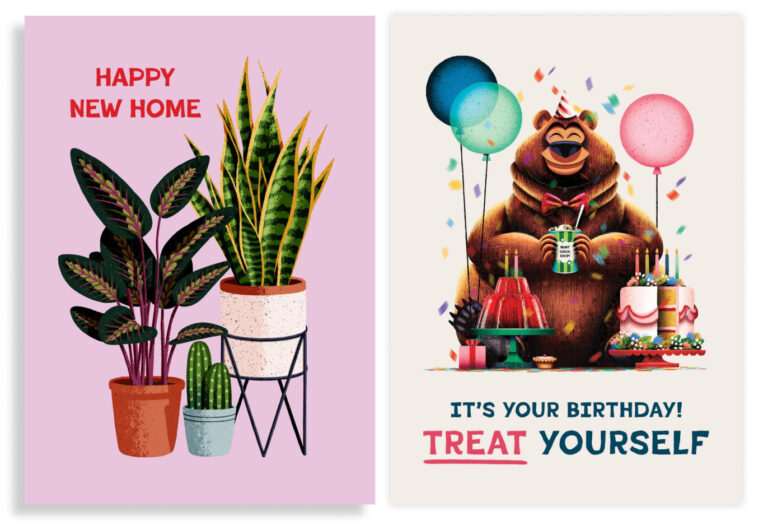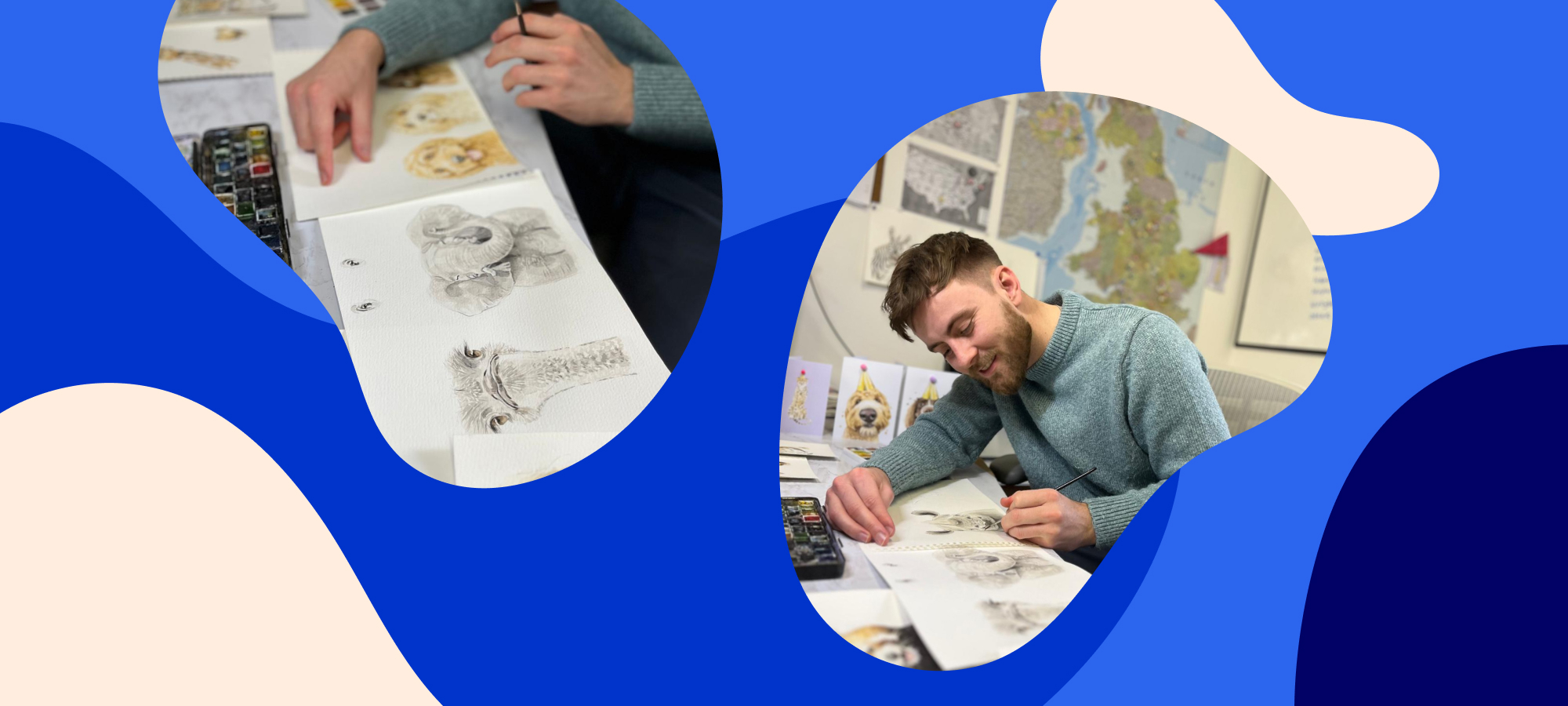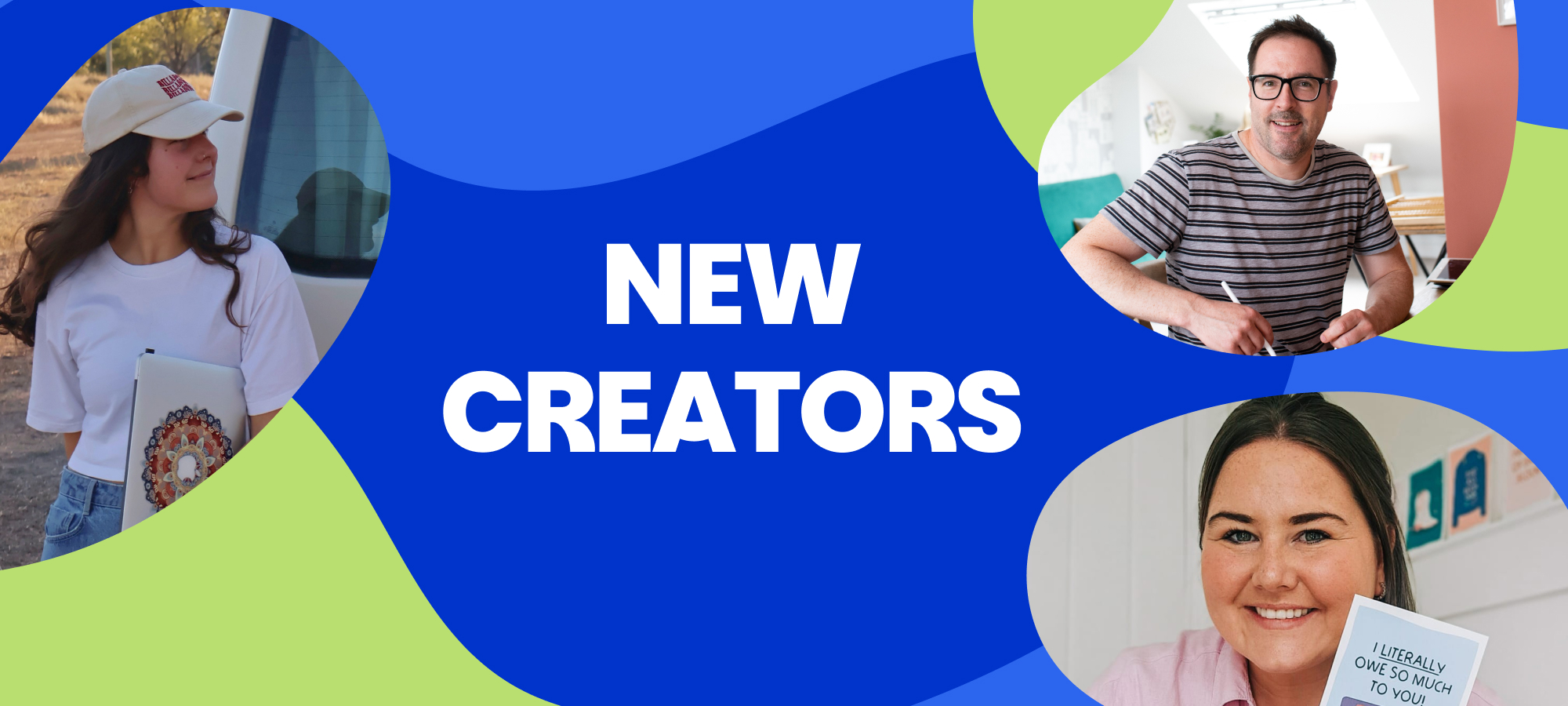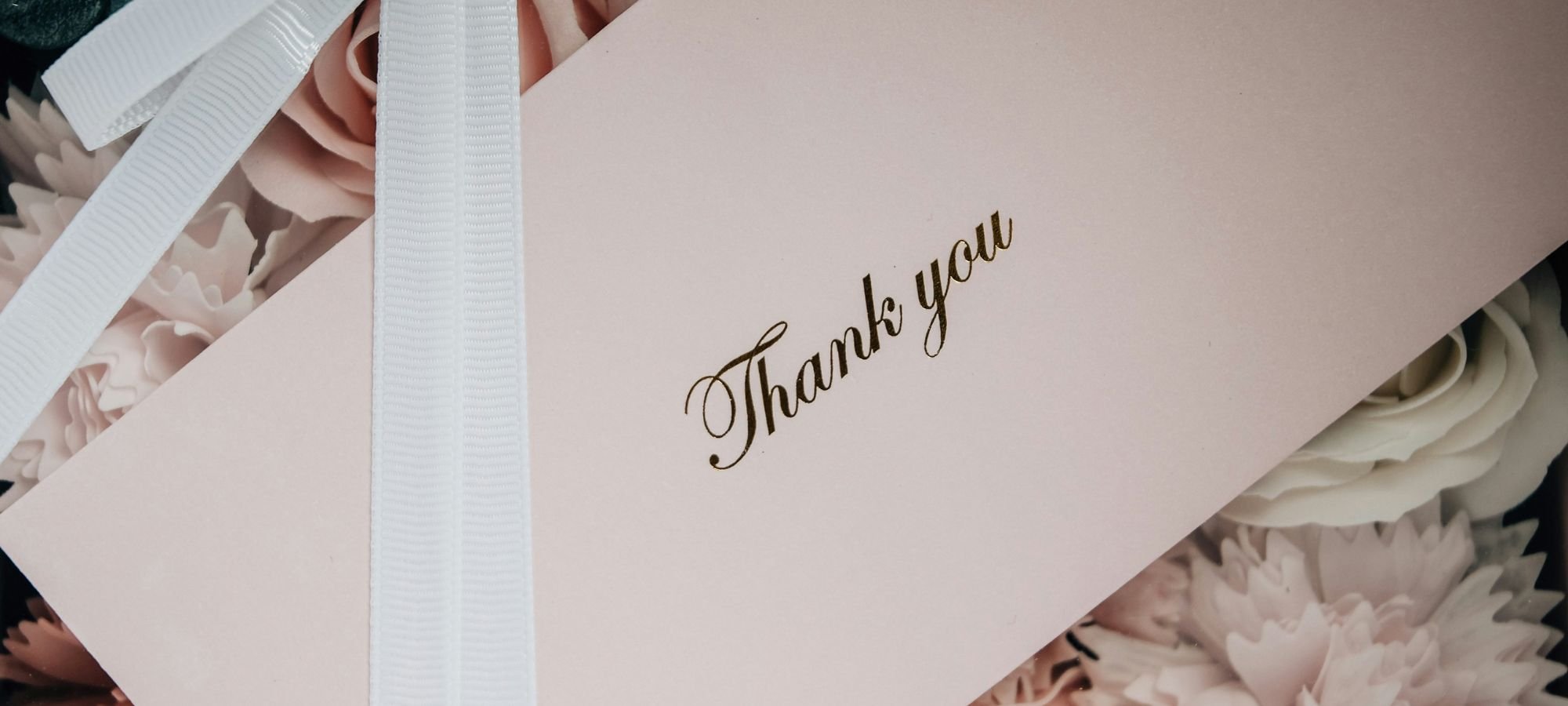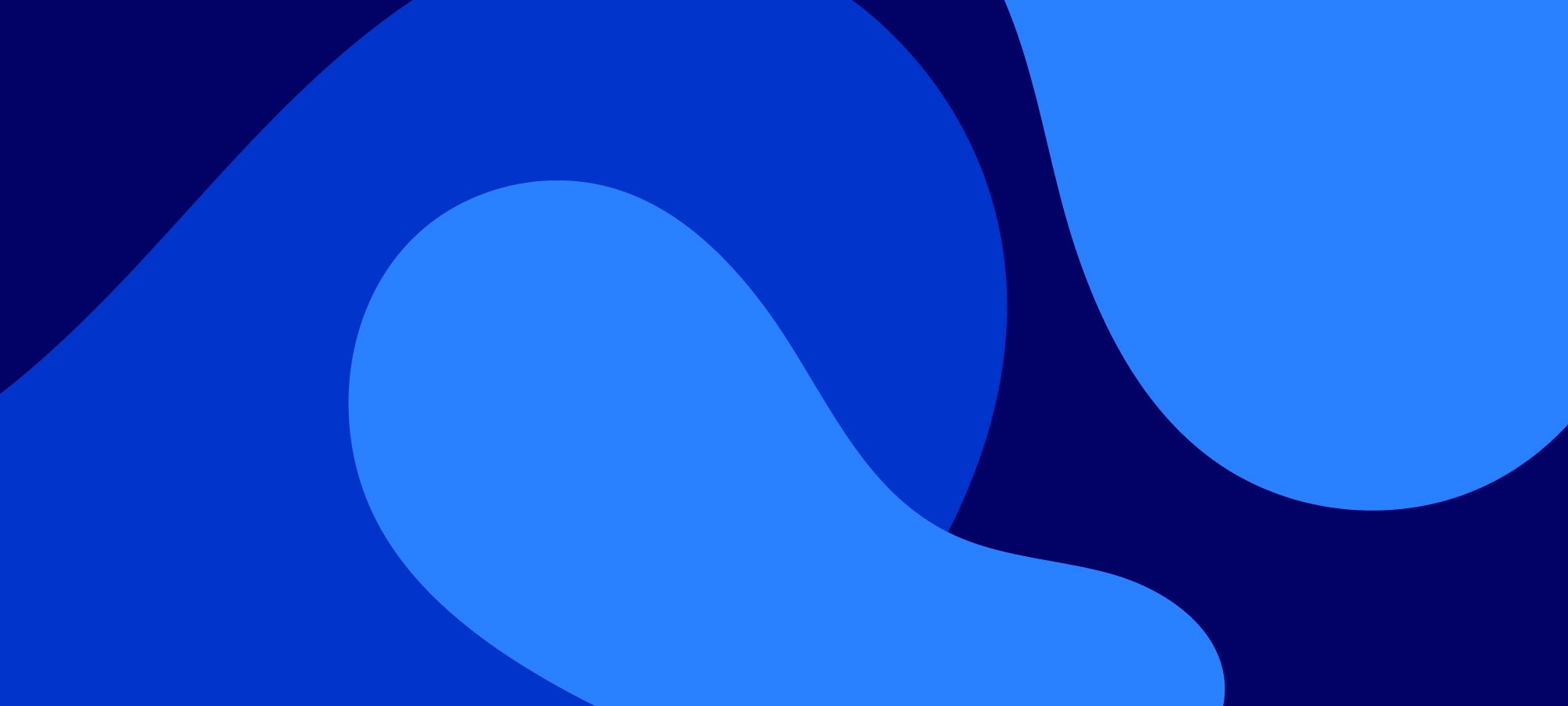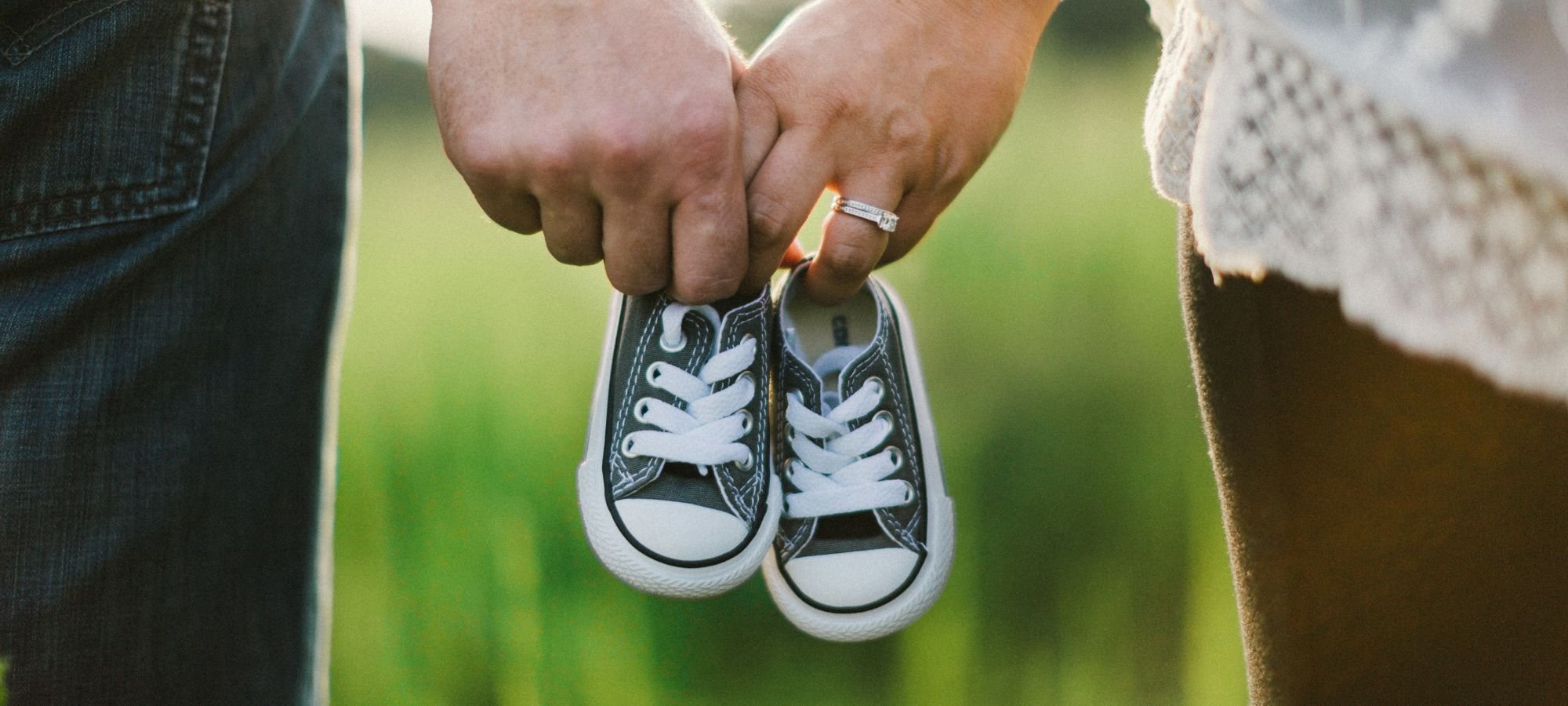It’s hard not to beam from ear to ear when looking at Robert James Hull’s pet portraits. They’re just so dang joyful.
Sit back and read all about how these wonderful creations came to be.
How did you first get started in creating watercolour pet portraits?
I always thought having a lucrative career in art came with the costly caveat of being born hundreds of years ago, and as a result, being dead. I’ve always enjoyed art, but never seriously considered it could be my job. The sole reason I chose watercolour was because it’s all I had on hand when I wanted to have a go at painting a hare for my mum on mother’s day. This was just after university when I had a regular office job, and just so happened to show people what I made. One asked if I’d have a go at painting their dog (for the hefty sum of one pint of beer), and from there another, and another. And that’s how it started!
Describe your artistic process when working on a pet portrait. From initial concept to the finished piece, what steps do you take?
When approaching a new card design, for example one featuring a new dog breed, I spend a good amount of time familiarising myself with the breed and their habits before doing any painting. For example the golden retriever design I have on Thortful. I know goldens are playful, curious and love nothing more than to stick their nose in everything (mainly to work out of it’s food). So for that design I decided to play with perspective and paint the illusion that the retriever is sticking its nose forward and thus appearing bigger. When I’ve decided on a concept I’ll either take my own reference photos from friend’s pets, or seek out a good fit online and ask the owners if they’ll allow their animal to be my muse for a card. In pretty much every case they’ve been thrilled with the idea. After that it’s committing the design to paper using a pencil and then getting the paints out!
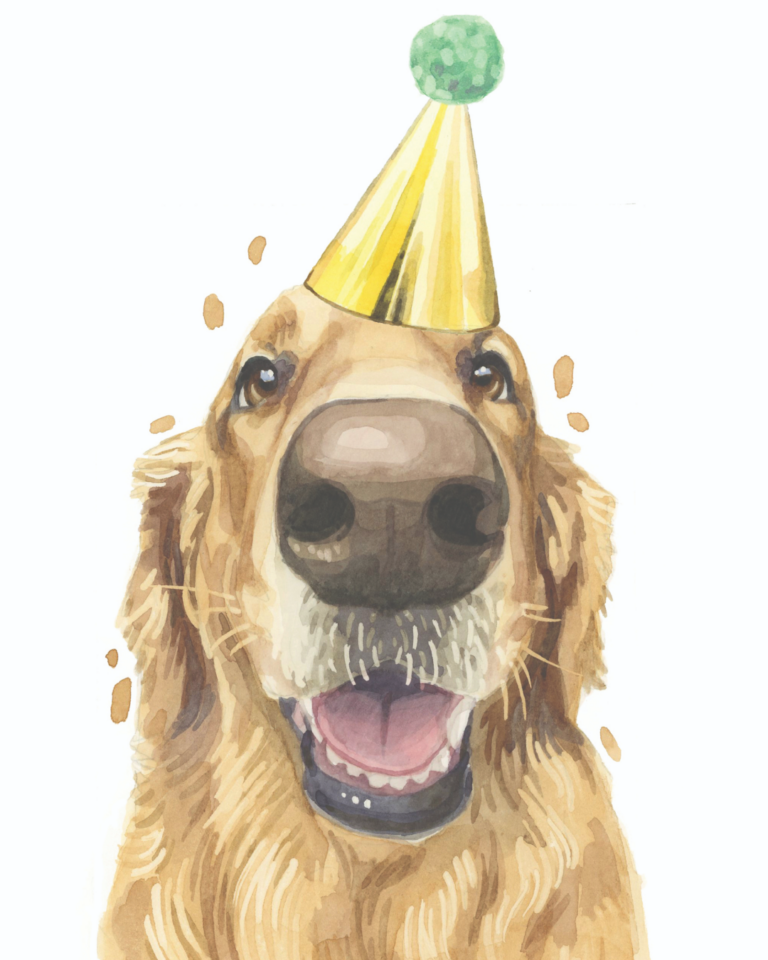
How do you make sure each piece has your distinctive style?
This is something I think about a lot. When I decide to paint something quite left-field, be it a completely new animal, or a landscape or a person, I always worry that it won’t look like ‘mine’ and won’t be consistent with the other stuff I’ve painted. But I think I’ve learned just to trust the process. The new pieces typically end up looking like mine because my approach doesn’t change. Without delving too much into the technicality of watercolour painting, I have a preference for ‘blocks’ of colour on top of washes that gradually build up to reveal the final image. I love a painting where the artist has left clues as to the process, which is something I really bare in mind when painting each piece.
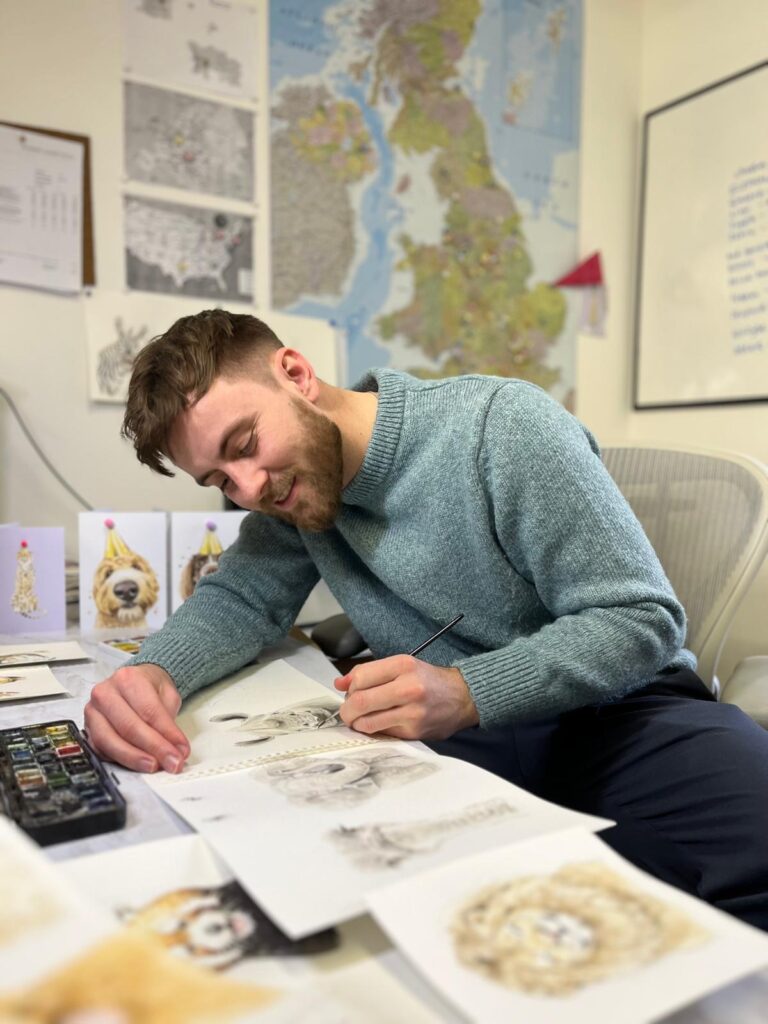
Tell us about your favourite pet portrait that you've created, and what makes it special to you.
My family said goodbye to our cocker spaniel Mia late last year, and at Christmas time I painted her. She came to us as a rescue aged ten and we only had her for a couple of years, but she left a huge mark on all of us. Many tears were shed while painting her portrait.
Share your top 3 tips for those who may be interested in trying watercolour designs.
Whether you’ve painted in other mediums before or never picked up a brush in your life, watercolour is a unique challenge. My tips would be to:
1.) Embrace the chaos. Watercolour has a mind of its own and can wander all over the paper, colours will bleed into one another and mix on the page. Trust it and let it do its thing!
2.) Stick with it. Watercolour asks you to take most of the things you already know about painting and either reverse them or ignore them entirely. For example, with there’s no ‘white’ paint, and if there was, because watercolour is transparent you’d see the colour under it anyway, rendering it useless. Your white paint is your paper. Similarly, and due again to its transparency, covering up a mistake really isn’t really possible in the way it is with other mediums. It’s quite the learning curve, so stick with it and enjoy it.
And finally, 3.) Just do it! I love watercolour because it’s so accessible. Unlike oils where you need lots of tubes, turpentine, clothes you can ruin, and usually a big space, watercolour requires the simplest of tools. A small pet of half pants, a paintbrush and some water is enough. It’s something that’s easy to have a go at, so have a go and maybe you’ll never look back!
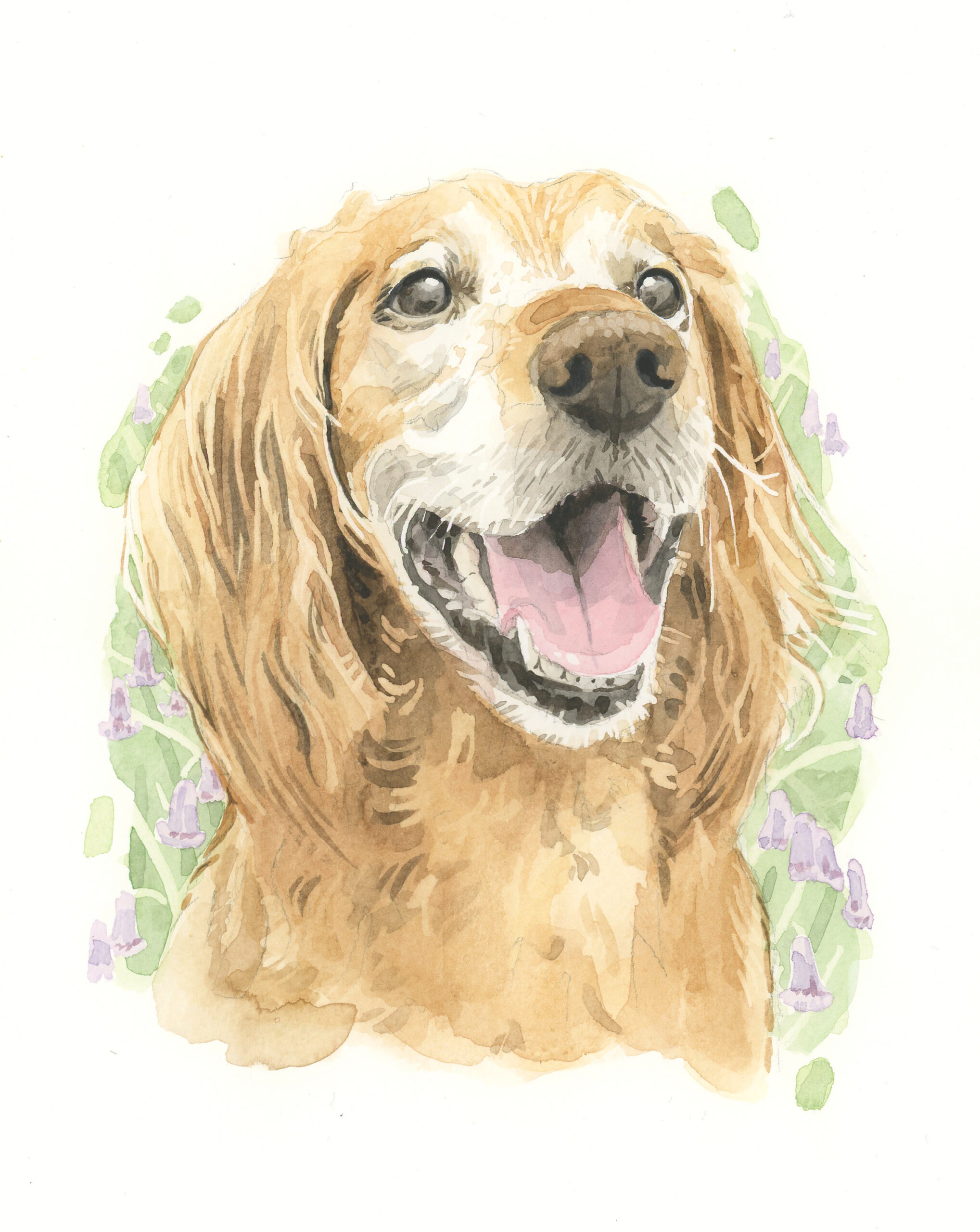
Tell us about the most unusual or challenging requests for pet portraits you’ve had.
For my custom commissions I’ve had almost every animal you can imagine! I’ve painted reptiles, a pig for a chap in Belgium, a dog dressed as a Dragonball Z character for someone in Australia – all sorts! The common thing that unites them all though is how much they love their pets, and it’s so wonderful to be involved in that process of giving them something they’ll treasure forever.
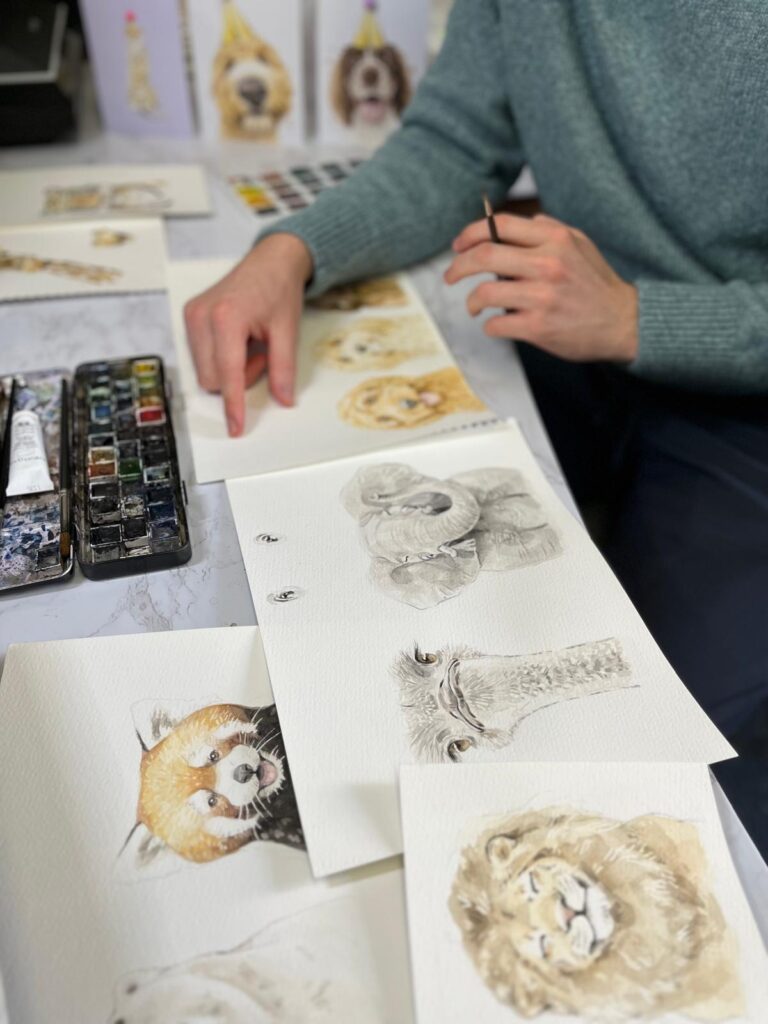
How has your artistic style evolved since you first started creating?
Before trying watercolour my favourite type of art was drawing with a pencil. It was a big jump to go from a pencil to a paint brush and I spent a lot of time at the start finding myself going back to them for details on top of my watercolour painting. For this I’d use a white gel pen for the highlights in the eyes, or a black fine liner for the edges or shadows. Eventually though, I found myself getting more and more comfortable with a brush and having to reach less and less for the pens and pencils. Now don’t use them at all after the initial sketch, and can write almost as good with a paintbrush as I can with a pen.
Which artists have inspired you?
My work is hugely inspired by the work of Lucian Freud (1922-2011). He painted with a style known as ‘impasto’ which is thick lumps of oil paint added on top of one another. The layers gradually build up to reveal a finished piece. In my earlier answer about style I mentioned how much I enjoy looking at a piece that contains clues as to how it was painted, and this is found in so many of Freud’s creations. I’ve taken this and tried and apply it to watercolours, which gives a completely different result of course, but it definitely owes a lot to him.
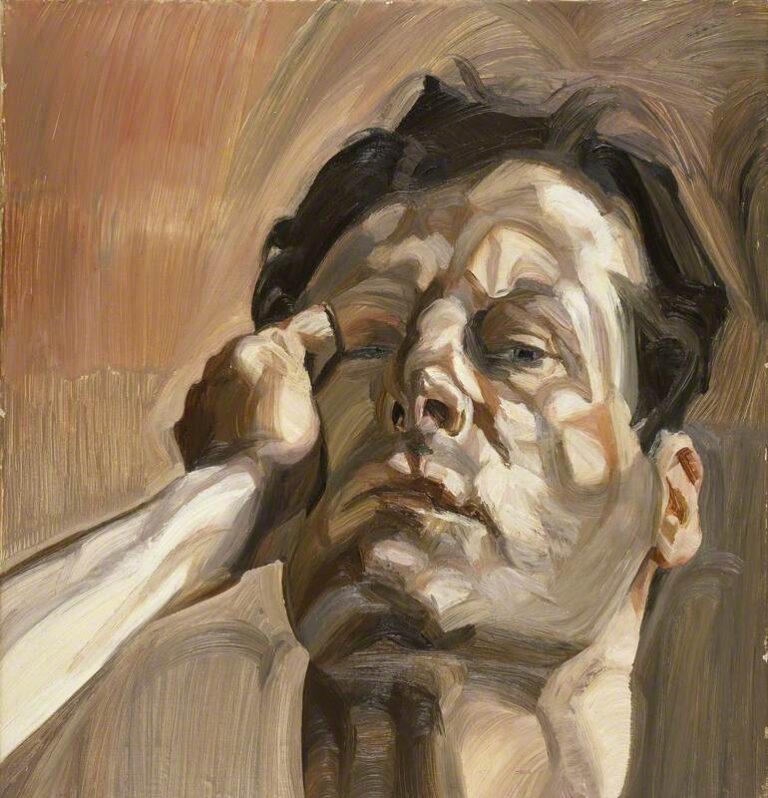
Another medium of art from which I draw inspiration from is pixel art, which isn’t a typical choice but something I love looking at. If you don’t know what pixel art is, think Microsoft Paint. It’s such a challenging thing to produce art on, and requires an incredible level of understanding of art, as you’re forced to draw pixel by pixel (dot by dot) often on a very small canvas. An artist I’d recommend you take a look at is Yuriy Gusev, who creates under the name of Fool – his work is just magical.
Someone else I’d like to mention that I admire is a fellow Thortful artist who goes by the name of Folio. I love artists whose works are instantly recognisable as being theirs, and Folio is one of them. His pieces are digital and completely different than my own, but all of them have a really consistent and well developed style, no matter the subject. They make for great art, and also for great cards.
